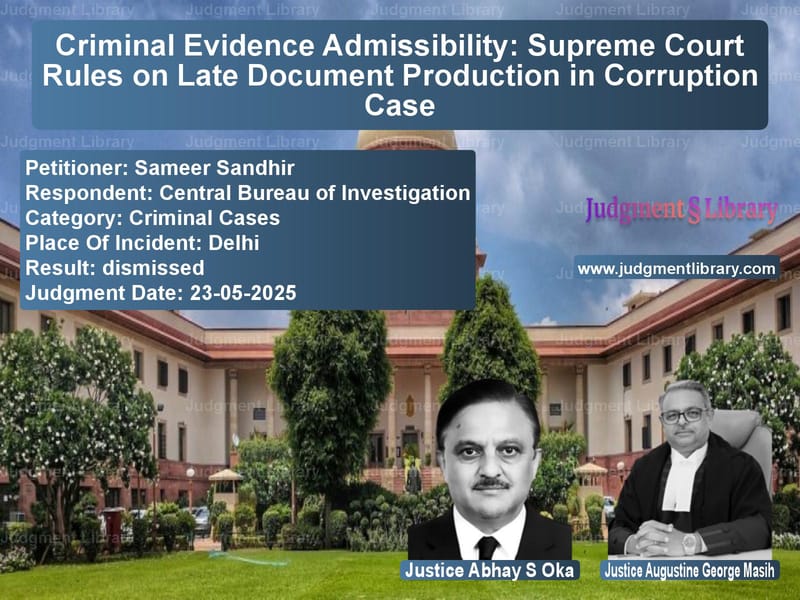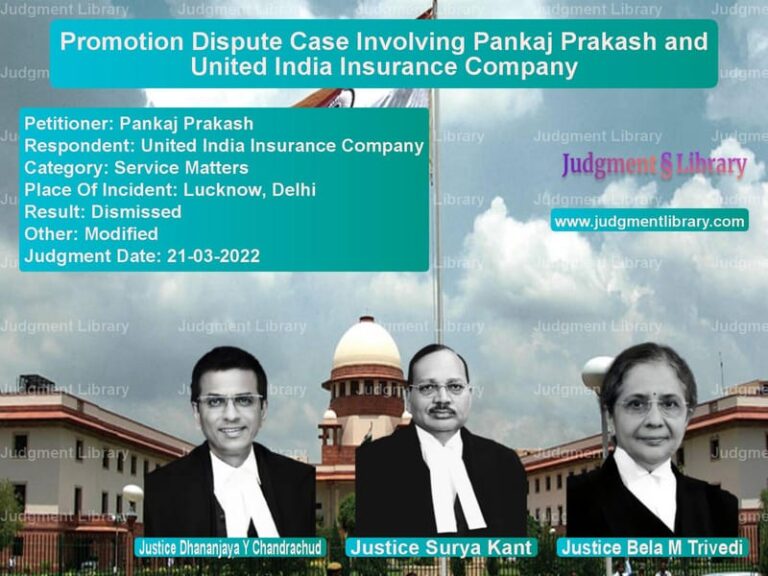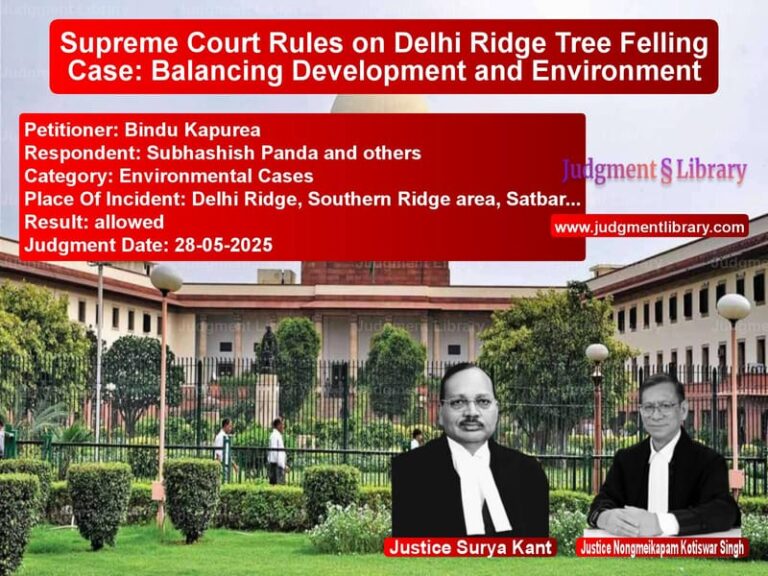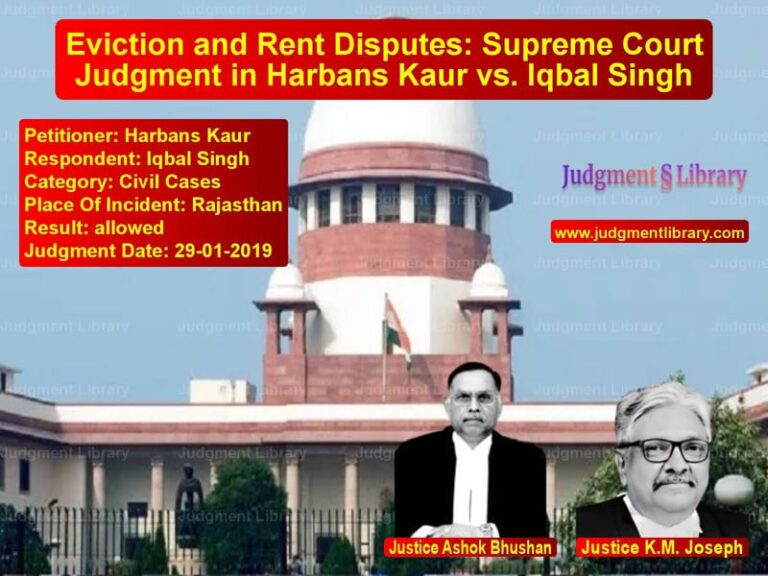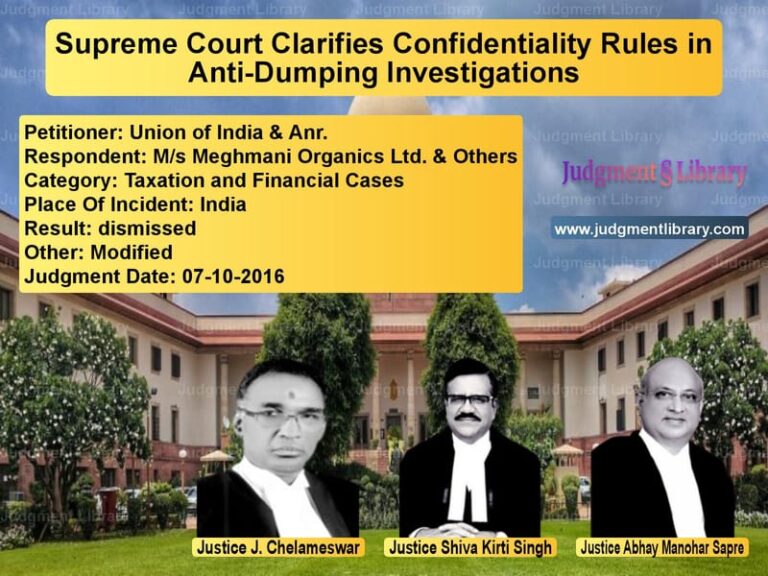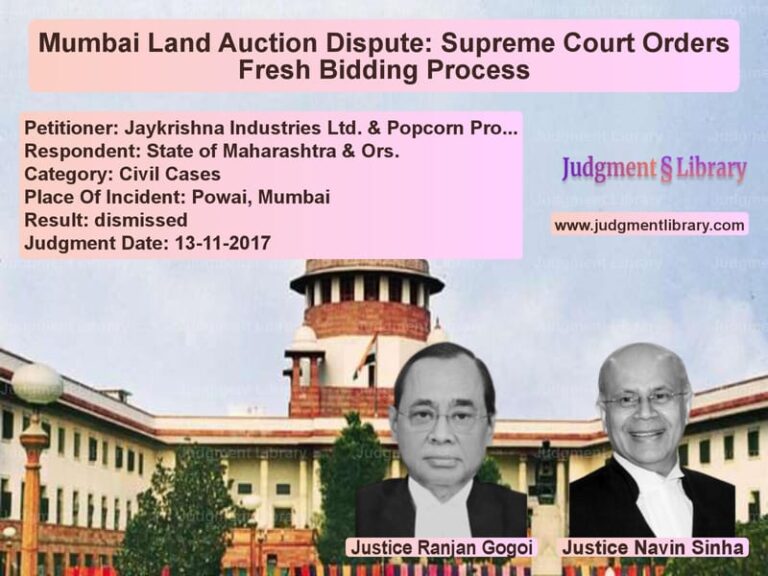Criminal Evidence Admissibility: Supreme Court Rules on Late Document Production in Corruption Case
In the intricate world of criminal trials, where every piece of evidence can make or break a case, the story of two compact discs containing intercepted telephone calls became the centerpiece of a legal battle that reached the Supreme Court. This case, involving Sameer Sandhir as accused number 7 in a corruption case, raises fundamental questions about procedural fairness, the rights of the accused, and the prosecution’s ability to correct its mistakes during trial proceedings. The dispute, which began with intercepted phone calls and evolved into a complex legal challenge, highlights the delicate balance between ensuring fair trial rights and allowing legitimate evidence to be considered by courts.
The case originated from an FIR registered on May 3, 2013, involving allegations under the Prevention of Corruption Act, 1988, and Section 120-B of the Indian Penal Code, which deals with criminal conspiracy. Between January and May 2013, the Ministry of Home Affairs had granted permission to intercept telephone calls of several accused persons, including the appellant. This interception led to the creation of two crucial compact discs containing records of 189 and 101 calls respectively, seized on May 4 and May 10, 2013.
The procedural journey of these CDs reveals the complexity of criminal litigation. On May 27, 2013, the CDs were sent to the Central Forensic Science Laboratory for analysis. The first charge sheet was filed on July 2, 2013, but notably, the CFSL report was not available at that time. The forensic laboratory forwarded its report and the original sealed CDs back to the CBI on October 25, 2013. A supplementary charge sheet was filed on October 30, 2013, along with the CFSL report, but crucially, the CDs themselves were not filed at that time.
The trial commenced with charges framed on March 11, 2014, and the recording of prosecution witnesses began on September 15, 2014. The controversy erupted the very next day when, during the evidence of PW-3, the prosecution sought to play the CDs that had never been formally filed on record. The defense counsel immediately objected, arguing that the CDs were neither relied upon nor filed in court, and copies had never been supplied to the accused.
This objection triggered a series of legal proceedings that would wind through various courts. The CBI filed an application for preparing copies of the CDs, which was strongly opposed by the accused. The Special Judge allowed the application on September 27, 2014, but since the appellant wasn’t heard before this order was passed, he approached the Delhi High Court, which set aside the order and directed the CBI to file a proper application.
The CBI then filed an application under Section 173(5) of the Code of Criminal Procedure for production of the CDs. The Special Judge directed the playing of the CDs in court for comparison with unsealed CDs in the CBI’s custody. When the accused opposed this, the High Court again intervened, setting aside the orders and directing the Special Court to first decide whether the CBI’s application could be allowed. Finally, on February 6, 2016, the Special Judge allowed the CBI to place the two CDs on record, a decision that was upheld by the High Court on April 26, 2017, leading to the Supreme Court appeal.
Before the Supreme Court, the legal arguments centered on fundamental principles of criminal procedure. The appellant’s senior counsel made several compelling submissions. He argued that “the CDs were available to the prosecution/investigating agency at the time of filing of the original chargesheet. His submission is that the CDs could have been produced only if they were seized while carrying out further investigation in accordance with sub-section (8) of Section 173 of the CrPC.”
Read also: https://judgmentlibrary.com/cbi-cotton-msp-fraud-case-supreme-court-sets-aside-discharge-of-accused/
The counsel relied heavily on the decision in Mariam Fasihuddin & Anr. v. State by Adugodi Police Station & Anr., emphasizing that “the material available to the prosecution prior to the filing of the chargesheet cannot be used by the prosecution under the guise of further investigation, as only the new material can be collected during further investigation.”
Another significant argument advanced was based on Arjun Panditrao Khotkar v. Kailash Kushanrao Gorantyal & Ors., where the counsel submitted that “in view of the said decision, additional documents can be produced by the prosecution only when the trial is at the nascent stage and the charge is not framed.”
The appellant’s counsel mounted a direct challenge to the precedent set in Central Bureau of Investigation v. R S Pai and Anr., arguing that “the view taken by this Court in the case of R S Pai requires reconsideration as sub-section (5) of Section 173 of the CrPC cannot be held to be directory.” He further contended that “the decision in the case of R.S. Pai is no longer good law.”
To bolster his argument, the counsel cited Sidhartha Vashisht alias Manu Sharma v. State (NCT) and V K Sasikala v. State rep. by Superintendent of Police, noting that “in both decisions, this Court held that Section 207 of the CrPC is mandatory.” He made a technical distinction between old and new criminal procedure codes, arguing that “the language used in sub-section (4) of Section 173 of the CrPC of 1898 was completely different from the language used in sub-section (5) of Section 173 of the CrPC.”
The respondent CBI, represented by the Additional Solicitor General, presented a different perspective. He explained the procedural timeline: “the CDs were seized on 4th and 10th May 2013, and they were sent to the CFSL on 27th May 2013. When the first chargesheet was filed on 2nd July 2013, the CFSL report was not available. He pointed out that the CFSL report was received on 25th October 2013. Thereafter, a supplementary chargesheet was filed, and the CFSL report was produced along with the supplementary chargesheet. He submitted that, inadvertently, the CDs were not produced.”
The ASG emphasized that “there is no prejudice to the appellant if the CDs are ordered to be produced” and firmly stated that “the decision of this Court in the case of R.S. Pai does not call for reconsideration at all.”
The Supreme Court, comprising Justices Abhay S. Oka and Augustine George Masih, began its analysis by summarizing the key factual aspects: the CDs were seized in May 2013, sent to CFSL later that month, the first charge sheet was filed in July 2013 without the CFSL report, the report was received in October 2013, and the supplementary charge sheet was filed later that month with the CFSL reports but without the CDs themselves.
The Court’s analysis heavily relied on the precedent set in R.S. Pai, quoting extensively from paragraph 7 of that decision: “From the aforesaid sub-sections, it is apparent that normally, the investigating officer is required to produce all the relevant documents at the time of submitting the charge-sheet. At the same time, as there is no specific prohibition, it cannot be held that the additional documents cannot be produced subsequently. If some mistake is committed in not producing the relevant documents at the time of submitting the report or the charge-sheet, it is always open to the investigating officer to produce the same with the permission of the court. In our view, considering the preliminary stage of prosecution and the context in which the police officer is required to forward to the Magistrate all the documents or the relevant extracts thereof on which the prosecution proposes to rely, the word ‘shall’ used in sub-section (5) cannot be interpreted as mandatory, but as directory.”
The Court further noted that the R.S. Pai decision “holds that if there is an omission on the part of the prosecution in forwarding the relied upon documents to the learned Magistrate, even after the chargesheet is submitted, the prosecution can be permitted to produce the additional documents which were gathered prior to or subsequent to the investigation.”
Addressing the appellant’s reliance on Mariam Fasihuddin, the Court observed that this decision “is of the Bench of two Hon’ble Judges. It does not make any departure from the decision of this Court in the case of R.S.Pai.”
The Court also examined Arjun Panditrao Khotkar, noting that this three-judge bench decision “in paragraph 55, reiterated the law laid down in the case of R.S.Pai.” The Court quoted paragraphs 55 and 56 of that decision, which state: “In a criminal trial, it is assumed that the investigation is completed and the prosecution has, as such, concretised its case against an accused before commencement of the trial. It is further settled law that the prosecution ought not to be allowed to fill up any lacunae during a trial. As recognised by this Court in CBI v. R.S. Pai, the only exception to this general rule is if the prosecution had ‘mistakenly’ not filed a document, the said document can be allowed to be placed on record.”
The Court distinguished the cases cited by the appellant, noting that “Sidharth Vashisht and V K Sasikala operate in completely different fields. The decisions are on the right of the accused to get the copies of all the relied upon documents. Basically, these two decisions deal with Section 207 of the CrPC, which deals with the supply of a copy of the Police report and other documents to the accused.”
In applying the law to the facts, the Court found that “the CDs were seized and referred for forensic analysis to the CFSL along with voice samples of the accused. The CDs were referred to in the supplementary chargesheet. After the report of the CFSL was received, the supplementary chargesheet was filed for placing on record the said report. Therefore, when the CDs were sought to be produced, in a sense, they were not new articles; the CDs were very much referred to in the supplementary chargesheet filed on 13th October 2013. There was only an omission on the part of the respondent-CBI to produce the CDs.”
The Court concluded that “applying the law laid down in the case of R.S.Pai, the impugned judgments of the Special Court and the High Court cannot be faulted with. We do not see how the decision in the case of R.S.Pai requires reconsideration.”
However, the Court did find fault with certain observations made by the High Court regarding the authenticity of the CDs, stating: “In our view, the High Court ought not to have gone into the issue of the authenticity of the CDs allowed to be produced. Whether the CDs produced were the same which were seized on 4th May 2013 and 10th May 2013, is something which will have to be proved by the prosecution. The issue regarding the legality of the Certificate under Section 65B of the Evidence Act ought not to have been dealt with at this stage. Even if the production was allowed, the issue of the CDs’ authenticity remains open.”
The Supreme Court ultimately dismissed the appeals but made important clarifications: “the issue of whether the CDs produced were the same which were seized on 4th May 2013 and 10th May 2013 is left open. The issue regarding the validity of the certificate under Section 65B of the Evidence Act is also left open. The issue of the authenticity of the CDs is kept open. The CDs were sought to be produced after the recording of evidence of some of the prosecution witnesses. It will also be open for the appellant to recall the prosecution witnesses for cross-examination on a limited aspect of the CDs.”
This judgment reaffirms the principle that while criminal procedure must be strictly followed, courts have discretion to allow procedural corrections that don’t prejudice the accused’s rights. It maintains the delicate balance between procedural rigor and substantive justice, ensuring that technical omissions don’t necessarily defeat the cause of justice, while preserving all necessary safeguards for the accused to challenge evidence and ensure a fair trial.
Petitioner Name: Sameer Sandhir.Respondent Name: Central Bureau of Investigation.Judgment By: Justice Abhay S Oka, Justice Augustine George Masih.Place Of Incident: Delhi.Judgment Date: 23-05-2025.Result: dismissed.
Don’t miss out on the full details! Download the complete judgment in PDF format below and gain valuable insights instantly!
Download Judgment: sameer-sandhir-vs-central-bureau-of-in-supreme-court-of-india-judgment-dated-23-05-2025.pdf
Directly Download Judgment: Directly download this Judgment
See all petitions in Fraud and Forgery
See all petitions in Money Laundering Cases
See all petitions in Bail and Anticipatory Bail
See all petitions in Extortion and Blackmail
See all petitions in Custodial Deaths and Police Misconduct
See all petitions in Judgment by Abhay S. Oka
See all petitions in Judgment by Augustine George Masih
See all petitions in dismissed
See all petitions in supreme court of India judgments May 2025
See all petitions in 2025 judgments
See all posts in Criminal Cases Category
See all allowed petitions in Criminal Cases Category
See all Dismissed petitions in Criminal Cases Category
See all partially allowed petitions in Criminal Cases Category

